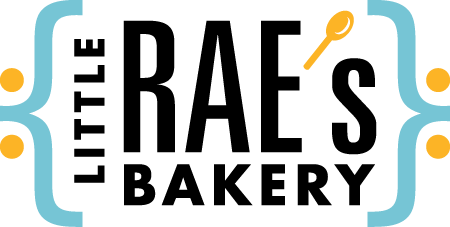When it comes down to it, baking really is chemistry: you’re taking a bunch of individual ingredients, all of which have certain chemical properties, and mixing them together to create one giant, delicious food item. But in Little Rae’s kitchens, that’s where the chemistry stops. We use zero artificial, chemical preservatives in our products.
Why? Frankly, we don’t want our families eating them, so we’re not going to make you eat them!
We have serious questions about the safety of many common food additives, including colors, flour conditioners, and artificial flavors. And we’re not alone: Whole Foods has an entire “unacceptable food ingredients list”—they simply will not stock foods that contain any of these ingredients.
We should note here that all the ingredients on this list are considered safe food additives by the U.S. government. Well, isn’t that reassuring?
Regulatory agencies in Europe, Canada, and Japan have much stricter standards about food safety than we do here in the U.S. For example, potassium bromate and azodicarbonamide (ADA) are commonly added to baked goods in the U.S., but both are banned in Europe because they may cause cancer. Potassium bromate, for example, is used to make dough rise higher and give it a white glow, but the Center for Science in the Public Interest petitioned the FDA to ban it nearly 20 years ago because of this potential cancer risk. The FDA says the ingredient has been in use since before the Delaney amendment on carcinogenic food additives was passed. So, this additive magically became safe because it’s been in use a long time?
ADA is used as a whitening agent in cereal flower and as a dough conditioner. But it breaks down during baking into chemicals that cause cancer in lab animals. The FDA says it’s “safe in limited amounts,” but European food regulators just aren’t willing to take that chance.
Food dyes are another strictly regulated item in Europe. A 2007 double-blind study by UK researchers indicated that artificial colorants Yellow Dyes No. 5 and No. 6 and Red Dye No. 40 appeared to increase children’s hyperactivity. In the UK, the study led authorities to ban use of these dyes as food additives. The EU chose to require warning labels on the products that contain them, which greatly reduced their use. The U.S. FDA, on the other hand, found the study inconclusive because it looked at the effect of a mixture of additives rather than individual colors, and so these artificial colors are still in use here.
But wait, it gets better: FDA approval is required for food additives, but the FDA relies primarily on studies performed by the very companies seeking approval of their chemicals. As Natural Resources Defense Council senior scientists Maaricel Maffini and NRDC senior attorney Tom Nether wrote in their report, titled Generally Recognized as Secret, “No other developed country that we know of has a similar system in which companies can decide the safety of chemicals put directly into food.”
The difference between European and American approaches to food additive safety is fundamental: Europe takes a preventive approach, banning additives that might present a risk of health problems, while in the U.S., the approach is reactive—an ingredient is “innocent until proven guilty.”
Here at Little Rae’s, we prefer the preventive approach, and that’s why you can count on us never to use artificial ingredients—not as dough conditioners, not as colorants, not as preservatives, and not as anything else. Enjoy your cookies and pastries knowing that you’re consuming nothing but natural ingredients.

